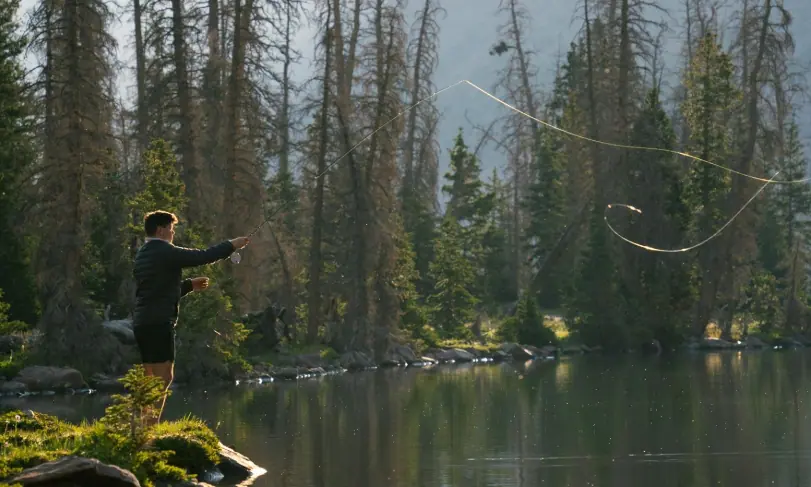Maximizing Hook-Ups: How the Right Line Increases Your Catch Rate
When it comes to fishing, many factors come into play—bait, technique, and location, to name a few. But one of the most important elements often gets overlooked: the fishing line.
How many times have you felt that tug on the line, only to watch it slip away before you can reel it in? It’s a familiar experience for many anglers. The key to improving those hook-up rates often lies in the line you’re using.
Your line is the connection between you and your catch, so it’s essential to choose one that complements the kind of fish you’re targeting and the conditions you’re fishing in.
What a Hook-Up Means in Fishing
A hook-up happens when a fish takes the bait and the hook sets firmly in its mouth. This moment often decides whether the fish ends up in your net or gets away. Without a strong hook-up, you’re just pulling in an empty line.
Several things can affect whether the hook sets properly. The way you hold your rod, the type of hook you use, and how quickly you react all make a difference. One factor that’s often overlooked is the fishing line, which helps the hook connect better, especially when bites are light.
Small issues with your line can lead to missed fish. If the line stretches too much or doesn’t match the fish’s size, your hook may not set fast enough. And when fish are biting gently, even a small delay can make you miss the chance.
How Line Type Affects Hook-Ups
Every line behaves differently in the water. Anglers often choose from monofilament, fluorocarbon, and braided lines, each with strengths and weaknesses. Some lines give better feedback, while others blend more easily with water conditions.
Braided lines offer very little stretch, which means you can feel bites faster and set the hook quicker. Monofilament stretches more, so while it’s good for absorbing shock, it can delay your response. Fluorocarbon falls somewhere in the middle, offering low visibility and some stiffness.
Picking the right type of line depends on your fishing situation. Shallow, clear waters may call for a low-visibility line, while deep or fast-moving spots may benefit from one that delivers quicker contact. The line you use needs to match the fish and how you fish.
Conditions That Make Hook-Ups Harder
Plenty of factors outside your control can make fishing tougher. Water clarity, temperature, and weather all affect how fish behave. On some days, fish barely tug the bait, making it harder to react quickly.
When fish are sluggish or cautious, you need gear that helps you notice every bite. Using a sensitive rod helps, but your line setup plays a bigger role than most people realise. A heavier or stretchier line can mask the light pull of a cautious fish.
Fishing in murky water or low light makes it harder to judge when to set the hook. Some anglers adjust using shorter leaders or changing bait, but changing the line type can sometimes bring faster results. Choosing a line that suits tricky conditions helps you stay alert and ready.
Choosing the Right Line for Better Hook-Ups
Not all fish need the same kind of line. A light setup works fine for a small perch, but stronger fish like pike or bass need a tougher line. Choosing the proper pound test, which shows how much weight the line can handle, helps you stay in control without overdoing it.
Aside from strength, think about line thickness. A thick line may hold up better but can reduce how naturally your bait moves. A thinner line lets bait drift more freely, which can fool careful fish, especially in clear water.
Try matching your line to your target fish and the lure and rod you’re using. A well-balanced setup helps you cast better, feel more bites, and keep fish on once they’re hooked. It’s these small decisions that improve catch rates over time.
Simple Tips to Improve Hook-Up Rate
Keeping your line tight is one of the most effective habits you can develop. Slack in the line makes it harder to feel bites and gives fish time to spit out the bait. Light tension means you’re ready to strike when you see or feel movement.
It also helps to stay aware of your surroundings. Wind, current, and how your bait sits in the water affect how your line moves. Watch the tip of your rod and how your line behaves — small twitches often mean a fish is playing with the bait.
Don’t forget to check your knots and gear before each session. A well-tied knot can be the difference between landing a fish and watching it swim away. Learning to adjust after each cast or missed bite helps you improve every outing.
Final Thoughts
Getting more hook-ups doesn’t always mean changing your whole fishing style. Sometimes, small changes — like picking the right line — can make a big difference. Once you find what works, fishing becomes a lot more fun and rewarding. So, try out a few options and see how much your catch rate increases.



Hi all
Explained each and everything that how can you set a hook to catch a fish in a perfect way. You can follow the same process for fishing. This article is specially for the hunters who love to fishing.
Roof Repair Services in Atlanta GA